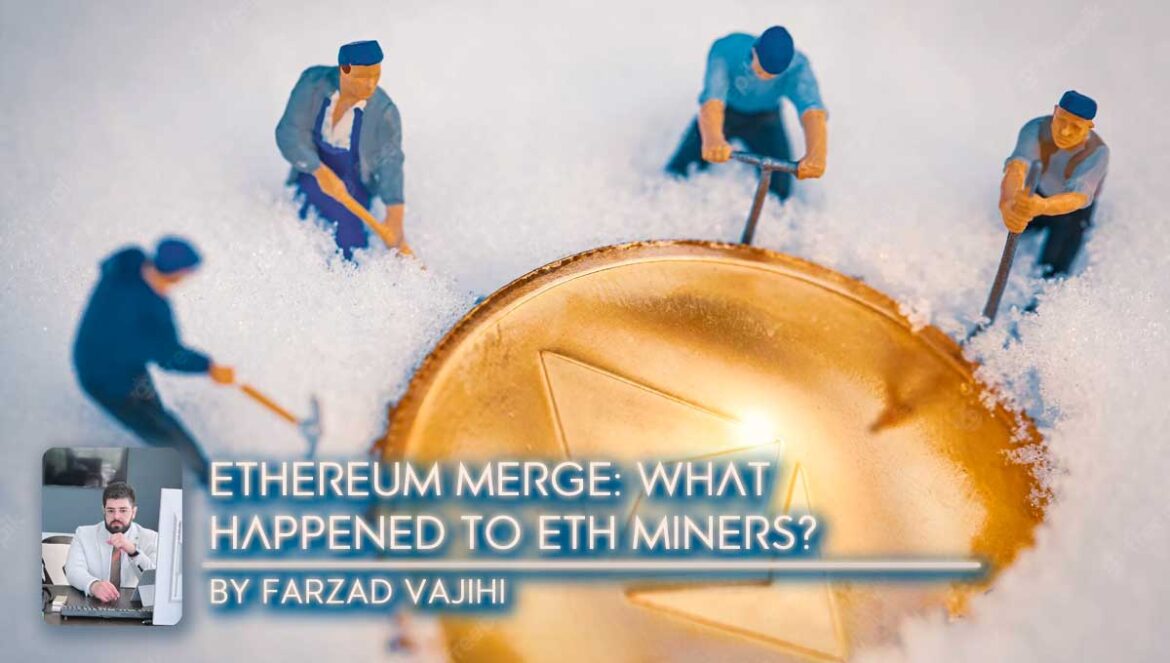By Farzad Vajihi – Analyst of stock market and cryptocurrency, Ph.D. in economics.
For most people, the launch of Ethereum’s long-awaited Merge upgrade took place almost seamlessly. Although many exchanges temporarily locked ETH operations during the Merge roll-out to avoid potential problems, a lot of crypto enthusiasts continued using Ethereum without even noticing the switch from Proof-of-Work (PoW) to Proof-of-Stake (PoS). However, one group of people has been massively affected by the Merge: Ethereum miners.
Can You Still Mine Ethereum After the Merge?
The simple answer is: no, you can’t. Since September 15th, Ethereum (ETH) is no longer a cryptocurrency with mining. The Proof-of-Work algorithm that supports mining has been completely replaced with the Proof-of-State algorithm, which doesn’t include mining.
In fact, removing the need for mining was precisely the main goal of the Merge upgrade. Mining Proof-of-Work cryptocurrencies consumes massive amounts of electric energy, which is the reason why coins like Bitcoin are often criticized by environmental activists.
Some cryptocurrency miners try to solve this problem by using only clean energy to mine crypto, such as hydro energy or solar energy. However, in times of energy crisis this is still not enough, and that’s why Ethereum decided to move to a fully eco-friendly PoS algorithm that consumes over 95% less electric energy than ETH used before the Merge.
On the technical level, mining is simply no longer the way in which new blocks on the Ethereum blockchain are created. Before the Merge, blocks were mined by the miners. After the Merge, all transactions on the ETH blockchain are validated by validator nodes. Validators do the same work as miners, and are rewarded for their work similarly to miners, but they do not have to use any advanced hardware – all they need to do is to stake ETH.
What’s the Difference Between Ethereum Mining and ETH Staking?
The main difference between mining Ethereum before the Merge and staking ETH now are the technical requirements. Mining required advanced hardware and consumed copious amounts of electric energy. In order to validate transactions by staking, all you need is some ETH.
Specifically, if you want to start solo staking Ethereum after the Merge, you’ll need 32 ETH, which is almost $50,000 with today’s prices. On the plus side, you don’t need to pay any energy bills or mining hardware upkeep and maintenance costs.
Staking also doesn’t require you to use any specialized hardware. However, you still need an ETH node that will be online 24/7. Because of that, Ethereum Foundation officially recommends using a separate machine for ETH staking. The good thing is that you can use any computer or laptop to do that – unlike mining, staking doesn’t require a lot of computational power.
Of course, solo staking ETH is not the only option. If you can’t afford 32 ETH to stake on your own, you can also join a staking pool with a much smaller deposit. However, it should be noted that solo staking is the most profitable, and it’s also the staking method that is officially recommended by the Ethereum Foundation.
While on the technical level staking and mining are completely different, their purpose is ultimately the same – verifying transactions. By running a validator node, you contribute to making sure that all new blocks added to the ETH blockchain contain only legitimate, verified transactions. In exchange for doing this important work, validators are rewarded with passive income.
What Will Ethereum Miners Do Now?
While most crypto enthusiasts are enthusiastic about the Merge, the new Ethereum upgrade is a huge problem for the miners. It’s worth noting that Ethereum was by far the most popular mineable cryptocurrency. Ethereum mining was estimated to be an industry worth $18 billion, and the hardware used by the miners was worth $4 billion. So what will Ethereum miners do now?
Miners can no longer mine ETH, but they still have their advanced equipment. The only thing that they can do is to use it to mine other cryptocurrencies. But the problem is that no other Proof-of-Work cryptocurrencies are as profitable for the miners as Ethereum was before the merge.
Miners have very few alternatives. One of the most popular ones is Ethereum Classic (ETC), an old Ethereum fork which still uses the Proof-of-Work algorithm. Other coins that can be mined are Dogecoin (DOGE), Litecoin (LTC) and Monero (XMR). However, some experts claim that none of these cryptocurrencies will replace Ethereum when it comes to mining, and that instead a new fork of ETH will be created by the miners.





